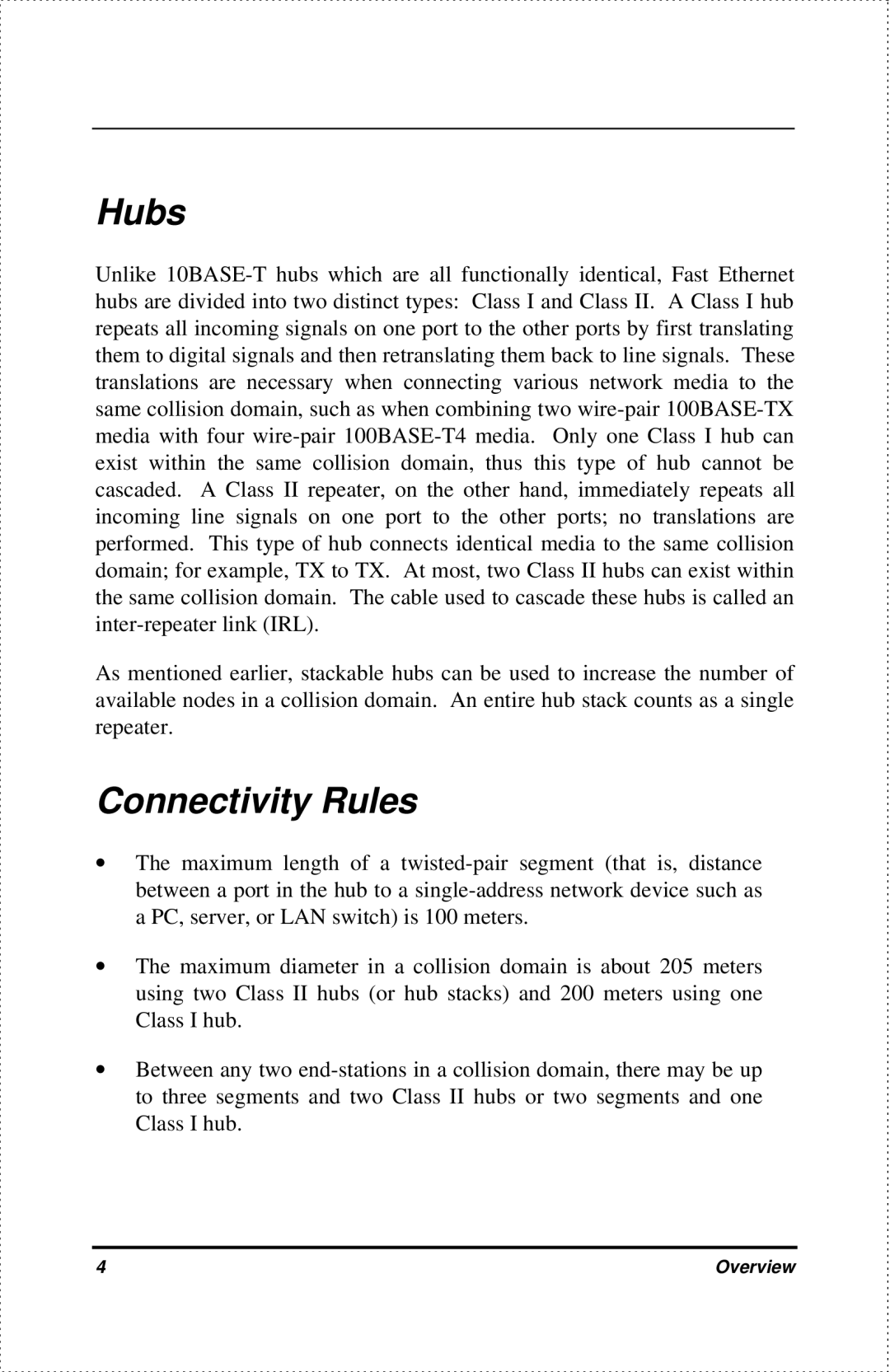
Hubs
Unlike 10BASE-T hubs which are all functionally identical, Fast Ethernet hubs are divided into two distinct types: Class I and Class II. A Class I hub repeats all incoming signals on one port to the other ports by first translating them to digital signals and then retranslating them back to line signals. These translations are necessary when connecting various network media to the same collision domain, such as when combining two wire-pair 100BASE-TX media with four wire-pair 100BASE-T4 media. Only one Class I hub can exist within the same collision domain, thus this type of hub cannot be cascaded. A Class II repeater, on the other hand, immediately repeats all incoming line signals on one port to the other ports; no translations are performed. This type of hub connects identical media to the same collision domain; for example, TX to TX. At most, two Class II hubs can exist within the same collision domain. The cable used to cascade these hubs is called an inter-repeater link (IRL).
As mentioned earlier, stackable hubs can be used to increase the number of available nodes in a collision domain. An entire hub stack counts as a single repeater.
Connectivity Rules
∙The maximum length of a twisted-pair segment (that is, distance between a port in the hub to a single-address network device such as a PC, server, or LAN switch) is 100 meters.
∙The maximum diameter in a collision domain is about 205 meters using two Class II hubs (or hub stacks) and 200 meters using one Class I hub.
∙Between any two end-stations in a collision domain, there may be up to three segments and two Class II hubs or two segments and one Class I hub.

